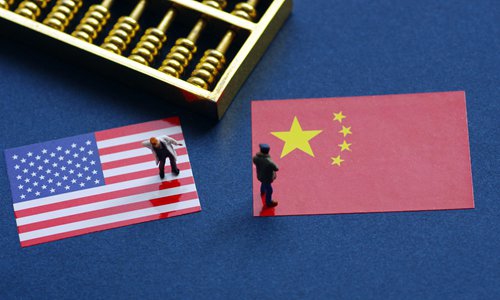HOME >> SOURCE
What’s Plan B for US as jobs go to Southeast Asia?
Source:Global Times Published: 2019/12/29 22:14:05

File photo
A new trade pattern seems to be taking shape among the US, China, and Vietnam as the trade war has given Chinese businesses strong incentives to transport goods to Vietnam for assembling and relabeling so as to avoid the hefty tariffs.As a result, Vietnam recorded total foreign direct investment (FDI) inflows of $38.02 billion this year, up 7.2 percent year-on-year and a 10-year high, according to the Foreign Investment Agency under the Ministry of Planning and Investment. Behind the impressive number is a surge in China's FDI inflows into Vietnam, which grew by triple digits in 2019.
The figures from Vietnam once again proved why US President Donald Trump's attempt to bring manufacturing back to the US through a trade war with China was doomed to fail.
It is true that some industries did move out of China due to the US tariffs, but their manufacturing jobs didn't go back to the US, but some Southeast Asian countries. Such a shift is to the benefit of the global distribution of China's manufacturing sector.
The Chinese government has long encouraged businesses to extend their production chain to markets along the Belt and Road Initiative route, but many were less motivated to do so. Now thanks to Trump's tariffs, companies have enough incentives to seek low-cost manufacturing sites. Such an industrial shift has also brought new development opportunities for Southeast Asian countries like Vietnam, which are already closely related to Chinese manufacturing and have a plentiful labor pool.
Nevertheless, the shift may also have some consequences for Vietnam, which may become a potential target for the Trump administration due to its rapidly growing trade surplus with the US. During the first 10 months of this year, Vietnam's merchandise-trade surplus with the US jumped 39 percent year-on-year to $46.3 billion.
Fundamentally speaking, the US is no longer in a position to bring such manufacturing capacity back, so it will have to rely on global trade and investment to meet its consumption needs.
As to boosting its exports to other countries to narrow the trade deficit, the US seems to have offered a limited choice of items for others to buy. By shutting the doors on sales of high-technology products to Chinese companies, the US is actually telling China to only feel free to buy its farm products like soybeans and beef. To a certain extent, the phenomenon explains the root cause of the global trade imbalances.
So far, the US economy looks to be doing well, but even for some Americans, it is hard to tell whether the growth momentum could be sustained. Right now the big question is what the US should do next after failing to recover manufacturing. Conservatism and tariff wars are definitely not the way to go to address the US' needs.
Posted in: GT VOICE